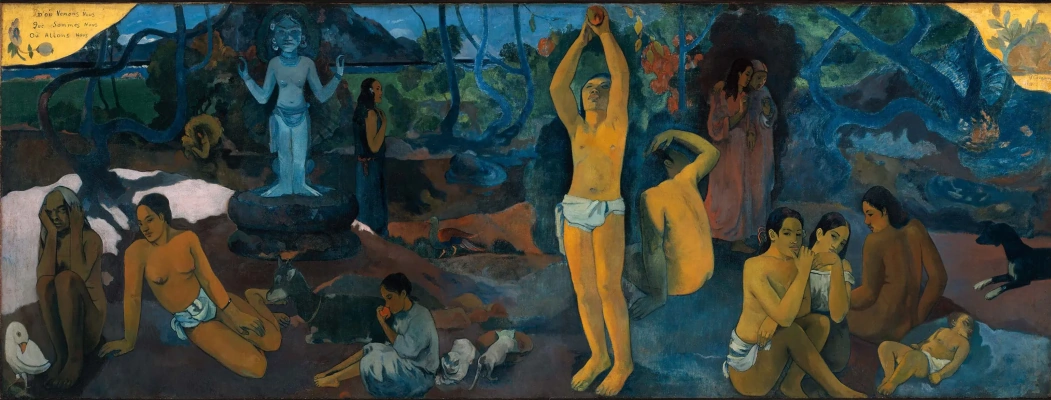"Where Do We Come From? What Are We? Where Are We Going?" Gauguin asked when naming his famous painting. Well, the answers were given by the world renowned artists, who once have determined the style.

This art movement emerged in 1880-s. Often using broad separate strokes, as Impressionists did, Post-Impressionists created canvas full of symbols. Their compositions are mostly static. Their palette is juicy, although it doesn’t cut but soothes the eyes, and this is the main difference from the Expressionist canvases. Such paintings look good in the interior. Rather than catching an instant impression, as in Impressionism, Post-Impressionism focuses on expressing a long-term state. In Post-Impressionist paintings there is no ‘depiction of the passing moment'.
The most famous representatives of the movement are Paul Gauguin, Vincent van Gogh and Paul Cézanne. In fact, the work of these painters formed a basis for many new art trends. Van Gogh paved the way to Expressionism, Paul Gauguin laid the foundations of Symbolism and Modernism , and Paul Cézanne expanded the understanding of how to build a composition, to depict colors as well as artist’s inner state on canvas. Many artists borrow their techniques up to this day. The work of Henri de Toulouse-Lautrec, a master of graphics and advertising posters, positioned within Post-Impressionism as well.
The most famous representatives of the movement are Paul Gauguin, Vincent van Gogh and Paul Cézanne. In fact, the work of these painters formed a basis for many new art trends. Van Gogh paved the way to Expressionism, Paul Gauguin laid the foundations of Symbolism and Modernism , and Paul Cézanne expanded the understanding of how to build a composition, to depict colors as well as artist’s inner state on canvas. Many artists borrow their techniques up to this day. The work of Henri de Toulouse-Lautrec, a master of graphics and advertising posters, positioned within Post-Impressionism as well.
Where do we come from? What are we? Where are we going?
1898, 139.1×374.6 cm
Paul Gauguin created a famous painting "Where Do We Come From? What Are We? Where Are We Going?" with its title delivering the essence of the whole art movement. If a canvas is tranquil, its palette does not cut the eye, its subject inclines you to reflections and inspires you to ask questions about eternity, then it’s most likely the painting of a Post-Impressionist.
Post-Impressionists mostly were self-taught and poor. Only years later, their contribution to the arts was recognized and appreciated. For example, "The Card Players", a series of five paintings by Cezanne, were created in 1890−1895, when the artist desperately lacked money. The paintings differ in sizes and in number of players shown. Four canvases are stored in the museums of Europe and America, and the fifth one was bought by the Emir of Qatar from a private collection for over $250 million (unofficial price) in 2012.
Written by Lena Skachkova.
















